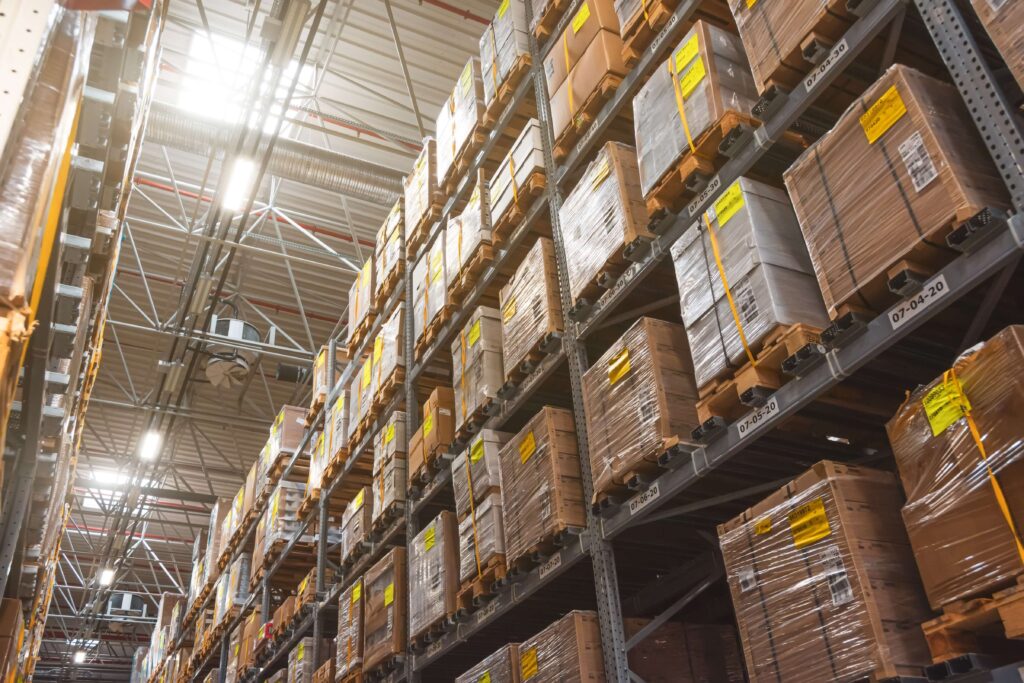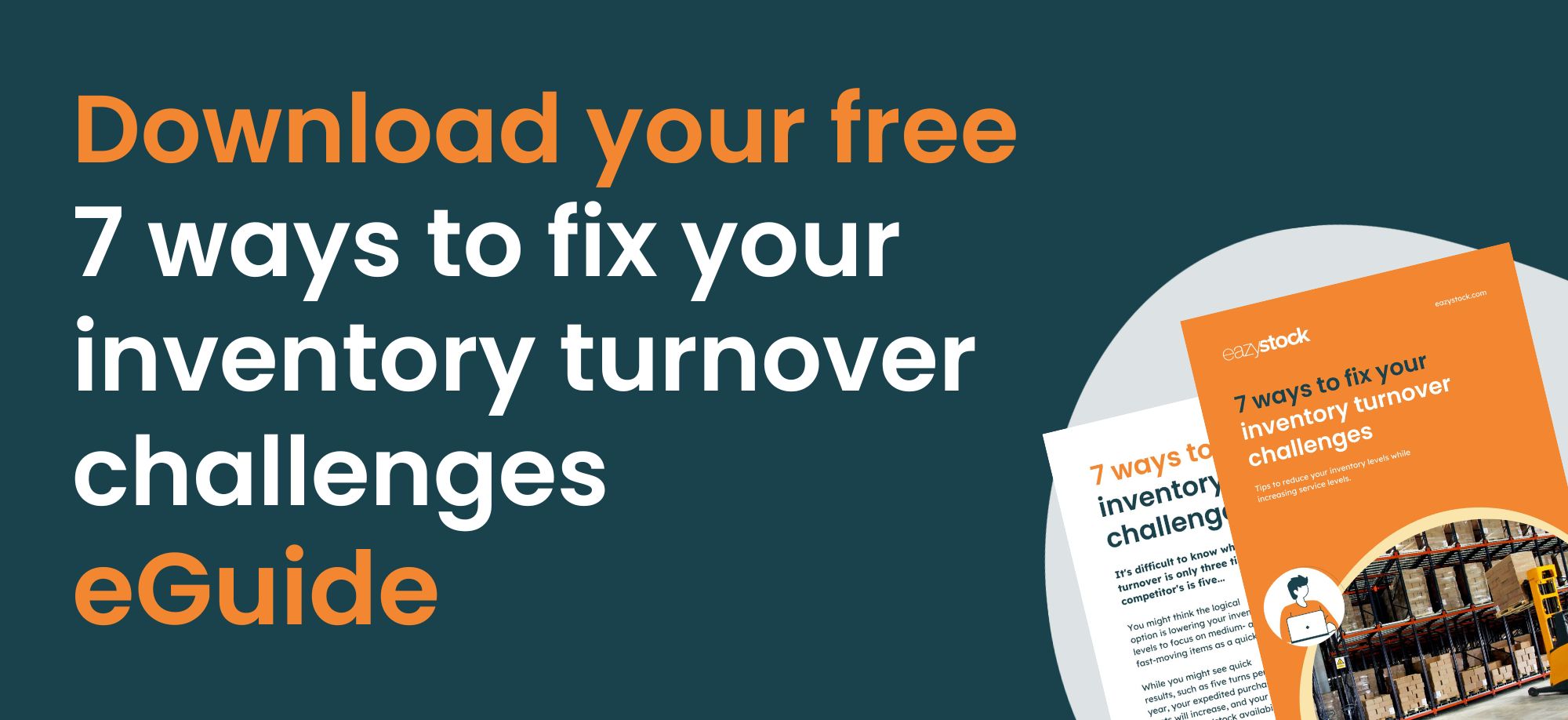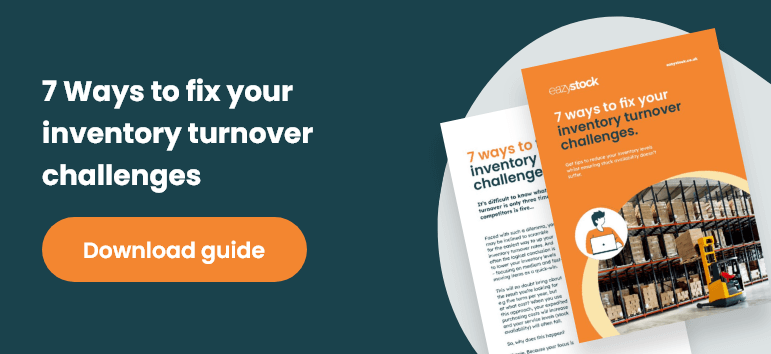The causes and consequences of low inventory turnover
What is low inventory turnover?
Low inventory turnover occurs when stock items are slow to move through the business. For example, stock items sit on your shelves for longer than they should, affecting cash flow and increasing carrying costs.
Most businesses that carry stock want to maintain a high inventory (or stock) turnover rate because they want the money they have invested in stock to be turned into a profit as quickly as possible. Whilst inventory turnover will vary from industry to industry, many businesses will benchmark it against similar companies to ensure it remains comparatively high.
So, if you recently calculated your inventory turnover ratio and noticed it’s low compared to your competitors’, or you’ve seen your figures begin to fall, read this blog to help identify the cause.
Why is inventory turnover important?
Inventory turnover is important because it highlights how efficient a company is at converting inventory into final sales and, therefore, much-needed cash. In addition, a business with a high stock turnover is likely to react better to market demands and have lower carrying costs per item, making it more profitable than one with a low inventory turnover.

Six reasons for low inventory turnover
Here are six reasons why your business could be challenged with low inventory turnover:
1. Counteracting supply chain disruption
So, let’s get the obvious reason out of the way! Since the coronavirus pandemic, businesses across the globe have faced significant supply chain disruption, from shipping delays to increased raw material prices to a shortage of HGV drivers. Consequently, many businesses have been stockpiling goods to reduce the risk of stockouts. If you’re one of them and your stock turnover ratio has dropped, you’ll need to build a plan to use up the excess goods sitting in your warehouse.
2. Seasonality
Demand for many goods is dictated by seasonal patterns, such as the weather, festivals and traditions. For instance, a boiler supplier will often see demand peak during the winter months due to the UK weather, whilst a distributor of fans will often see sales spike in the summer. Traditional festivals such as Diwali, Christmas or Halloween will also impact the sales of certain items at their respective times.
If inventory planners over-forecast for such fluctuations, they could be faced with excess inventory when demand plummets. Consequently, the stock will remain in the warehouse until the following year, negatively affecting inventory turnover ratios.
3. Product life cycle
When we look at individual SKUs, inventory turns will change as an item moves through its product life cycle. Demand could be high at the introduction and growth stages, leading to high turnover rates. However, as the item reaches the end of the maturity phase and hits decline, demand will obviously start to drop off, and inventory turns will begin to slow down.
A business that fails to spot products reaching this phase could fall into the trap of over-ordering and be left with shelves of obsolete stock – and a poor stock turn rate.
4. Poor replenishment procedures
Poor inventory management policies and procedures may result in low stock turnover ratios. Inventory management teams without automated systems may struggle to improve efficiency and reduce their order cycle times, making it almost impossible to increase inventory turnover.
In addition, without stock control or inventory optimisation systems, teams may find it hard to keep track of what they have in stock, let alone what they should be ordering!
5. Carrying slow-turning, high-cost products
Stocking large numbers of slow-moving, high-cost items will lower your inventory turnover ratio. In addition, you’ll be investing more working capital in inventory (at the expense of other areas of your business, such as marketing or IT) and possibly increasing your risk of stock obsolescence.
In some cases, it’s cheaper to rush through orders of high-cost items from a supplier compared to the cost and risk of keeping these items in stock.
6. Buying in bulk
It can sometimes be tempting for purchasers to buy in bulk from their suppliers to take advantage of discounts or economies of scale. However, it’s essential to weigh up the extra carrying costs and opportunity costs against the savings to ensure you’re really getting a good deal.
Other businesses may find they have no choice in the quantities they order from their suppliers due to minimum order quantities, values or weights.
What does low inventory turnover mean for my business?
Three key business problems arise when stock turnover is low.
Stock obsolescence:

Obsolete stock usually starts as excess stock. If your inventory team doesn’t take the right actions, the excess stock gets older and less appealing to the marketplace until it becomes obsolete, e.g. has no demand.
Obsolete inventory has a negative effect on the balance sheet. Businesses either need to sell off items at a lower margin or write them off completely, damaging their bottom line.
Poor cashflow:
Holding more stock than you need to meet demand will negatively affect your inventory turnover rate and result in excess inventory building up in your warehouse. Your business will, therefore, see more and more money tied up in stock and less being converted to sales and cash for other business opportunities.
High carrying costs:
A low inventory turnover often means you’re holding too much stock, which increases your carrying costs, such as warehouse costs, utilities, insurance, and opportunity costs.
How to overcome low inventory turnover
If you recognise any of the above causes or consequences of a low stock turn, it’s time to take action. Improving your inventory turnover ratio is easier than you think. But the answer is not to reduce the order quantities of all your SKUs! This approach could very quickly lead to stockouts and unhappy customers!
Instead, the key is to optimise your inventory. This means prioritising the items you hold and order based on their value to the business, forecasted demand, demand volatility and pick frequency (e.g. identifying fast or slow-moving items). Armed with this information, you can begin replenishing your stock much smarter and more strategically. These are the basic principles of EazyStock inventory optimisation software.
Read this post to find out more about how you can improve your inventory turnover without harming stock availability, or download our eBook below:
Or, if you’d like to learn more about EazyStock, contact us on 0121 312 2992 or request a demo.










